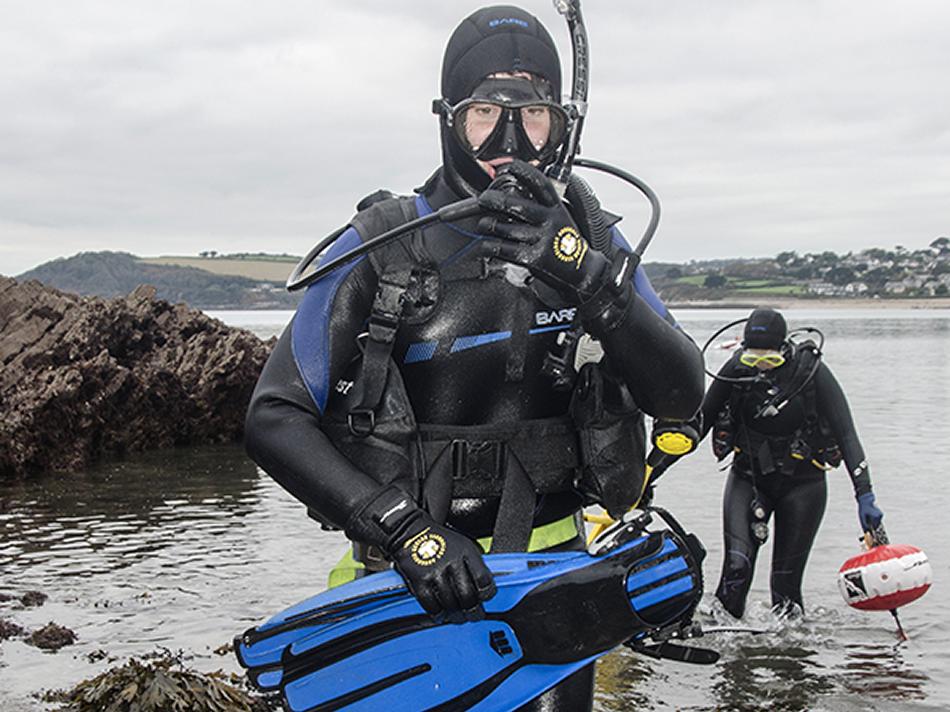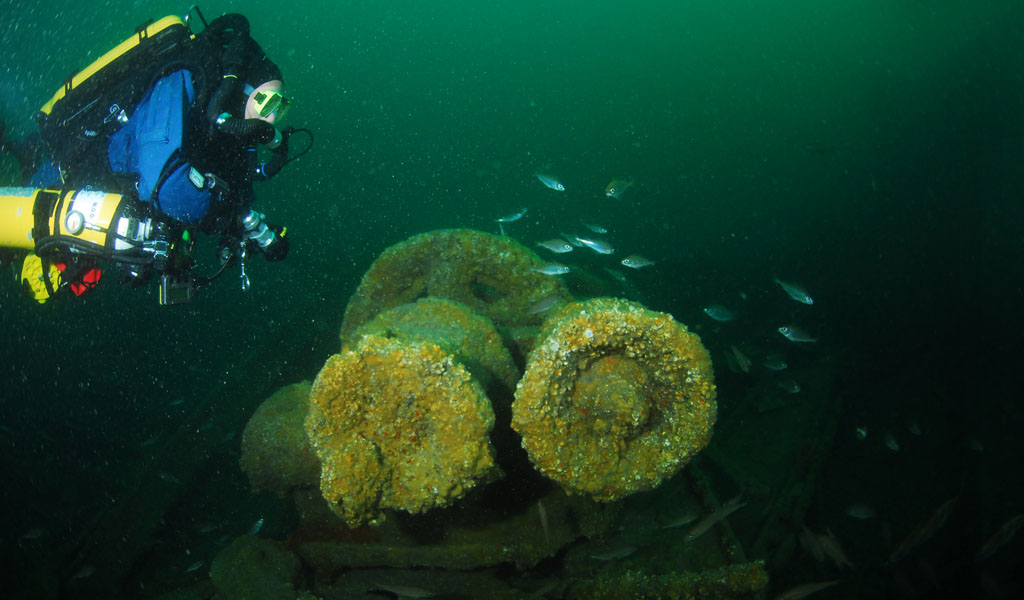
Johno and Cathy De Lara of Newbury BSAC have found much to see by going that little bit deeper off the South Coast. Here are the second five of their top 10 wrecks in trimix range.
You can read the first five wreck dives recommended by Johno and Cathy here.
A common question that people ask when we dive sites such as these deep wrecks in the English Channel is how they are identified. In some cases, items such as the ship’s bell or a boilermaker's plate make it easy. In the case of the SS Luxor, one of the five wrecks described below, it was a combination of location, size and a broken piece of crockery with the shipping line’s crest on. So, when you are diving wrecks, it is worth always keeping an eye out for clues.
1. SS Daylesford
In the early 1900s, the mainstay of shipping around the British Isles was the transport of coal. The road network as we know it was a distant dream, consisting mainly of single carriageway roads that went through towns and villages. The canals were in decline and the railway network for goods still growing. The UK coal mining industry was in full production, providing coal for home use, but also exporting coal to other industrial countries. It is against this backdrop that the SS Daylesford was steaming from Blythe, Northumberland, to Spain full of coal on a late March day.
As she manoeuvred down the channel making good progress despite the thick fog, she was in close proximity to the schooner, Puhlin. At about 7am, as they rounded the Isle of Wight, there was the inevitable collision. The Daylesford was seriously damaged, but as the captain recognised this very quickly, the whole crew was able to transfer onto the Puhlin. The Daylesford went down in five minutes, about 17 miles from St Catherine’s Point, the southerly most point of the Isle of Wight.
In 46m of water, time on the wreck is quite limited, even with Trimix. A dive on the Daylesford is dominated by the large, two-cylinder compound engine and the two boilers. The engine is bolt upright and affords a great opportunity to investigate the quality of 1880s engineering. Despite being underwater for more than 100 years, it is in remarkably good condition: with the cylinder heads, valves and con rods all in position ready to drive the 1,400-tonne ship through the water. Congers, crabs and lobsters live in the crannies, with bib and pollock swimming about.
Finning aft, you can follow the driveshaft over the holds and winches to the stern. The stern is very broken, as you would expect with the collision point being at the stern. This does mean you can clearly see the propeller, with a missing blade and steering quadrant. Moving forward from the engine, the site is covered in broken wreckage and winches all the way up to the anchors that mark the bow. A good rummage will reveal the bridge and forward winches. On one dive, a rummage in this area resulted in the location of the ship’s bell.
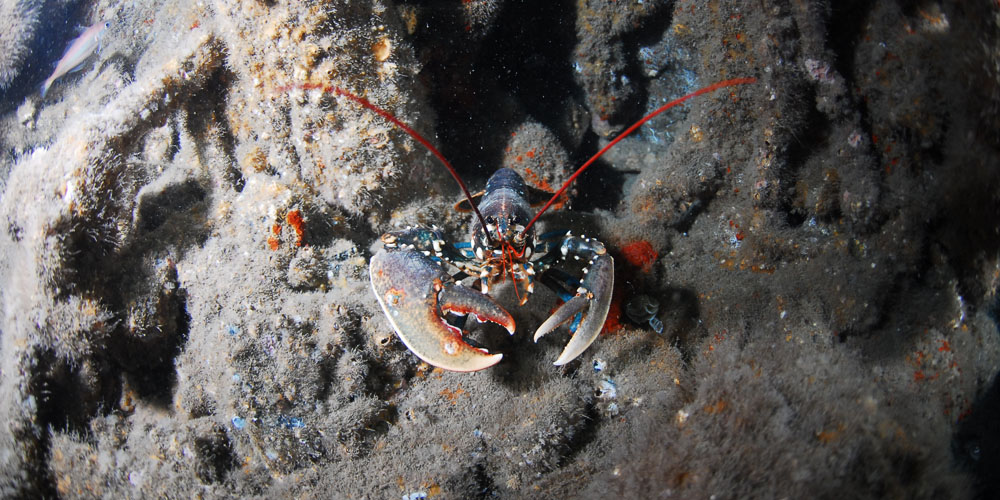
2. SS Ajax
The Ajax was one of seven ships sunk from convoy CW9 (aka Peewit) in August 1940. The naming convention CW9 indicates this was the ninth convoy in the channel heading west. CW9 began in Southend, following the successful – measured by no losses – easterly convoy CE8. German Field Marshall Göring had just publicly announced that the channel was in German hands, hence the British Navy commanders running CW9 were under immense pressure to get the convoy through, to prove Goring wrong.
The Germans had been monitoring this convoy as it moved through the Dover Straits, using the new Freya Radar system. They used the four available E boats (aka Schnell boats or Motor Torpedo Boats) to lie in wait for the convoy, and succeeded in sinking four ships before the convoy reached the Isle of Wight. Then, as the convoy passed St Catherine’s Point, the weather cleared and the Luftwaffe had clear sight of them. Ju87 bombers and Me109 fighters began an attack. Out of sight of the ships, the RAF was in support of CW9. Aircraft countered the attack and the ensuing air battle became one of the initial engagements of the Battle of Britain. In the initial attack by the Ju87s, two bombers and a fighter attacked SS Ajax. Three bombs hit the forward section of the ship and she sank within five minutes. Thankfully, all but four of the crew made it safely off the vessel.
SS Ajax now lies in 40m of water on a white sandy bottom and it is an interesting dive. The bow is the most substantial part of the ship lying on its port side, with two anchors in place. The boilers are there, just forward of the triple-expansion engine. The stern is very broken. The most striking feature is the rear steering position standing proud of the white sand.
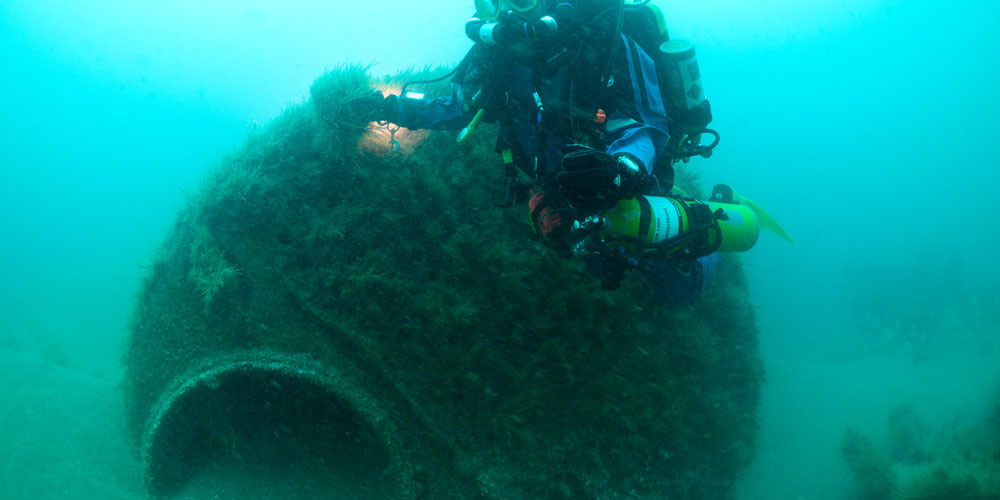
3. SS Terlings
The tactics employed by the British in 1940 ensured that ocean-going vessels were protected in convoys while they travelled down the channel and out into the Atlantic. Once a convoy was in open water, and theoretically clear of U-boat attacks, the ships then scattered. In this way, the U-boat threat was nullified without vast convoys crossing the Atlantic. This had to be revised later in the war as the U-boats became more successful.
SS Terlings suffered damage during a German attack on convoy OA178 (see the Dallas City, featured in Part One, SCUBA April 2020) but she was repaired within a month and during June 1940 she went back into service. She joined CW7 for protection in the Channel until she could get clear of German attacks. On the afternoon of 21 July 1940, SS Terlings was passing the Isle of Wight when the Luftwaffe found the convoy and attacked. The attack was from the rear of the convoy and the ship was hit nine times, with the loss of eight men.
Sitting in a moderate 40m of water, the Terlings is a good depth to enjoy a reasonable dive time and not incur too much in the way of decompression penalty. As you would expect of a 90m-long ship that took nine hits, the wreck is fairly broken. The bow lies to port and was half clear of the sand when we dived. There is a large starboard anchor, level with the seabed, and only the forecastle railings still visible. The two boilers and the engine are exposed amidships, but the engine is partly covered with debris.
The wreck is increasingly broken-up aft of the engine, but it is still easy to navigate to the stern. The stern is broken off and is facing upwards. It is an impressive sight, with an obvious steering quadrant visible. The rudder pintle can be seen where it goes through the hull, but only the top of the rudder shows, and there is no sign of a prop. There is a very large stern gun out on the sand to starboard and boxes of ammunition piled up close by, in what would have been the storage area below deck.
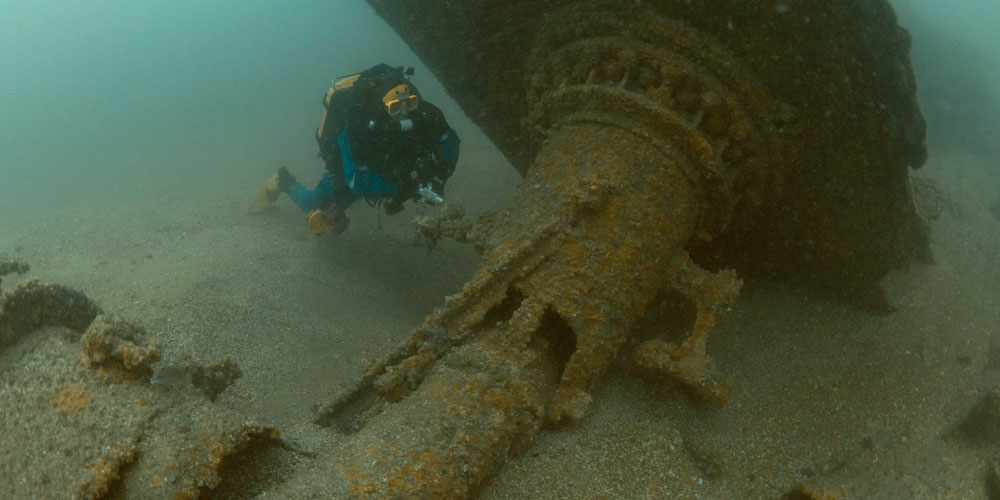
4. Motor Tanker Y48
In January 1945, there was a vast amount of shipping from the United States that had come across the Atlantic to help in the war effort. At this time everything that the troops fighting in Europe required had to be shipped from the UK across the channel. To help, the US supplied ships to carry goods and fuel. Y48 was such a vessel, hastily constructed and not given a ‘name’, it was only ever known by its designation Y48.
In January 1945, Y48 was reported to be in a sinking condition, south-west of the Isle of Wight and was subsequently sunk by allied forces as she was a hazard to navigation. The 633-tonne vessel lies in 58m of water, upright and seemingly in good condition. It looks like a tanker, with the pipes and pumps clearly visible on the deck. Also on the deck, covered in wreckage is the spare propeller. Moving forward to the forecastle, the first thing you will see is the spare anchor, between the two doors. Looking inside the doors will reveal an American motorcycle of the era. This is probably a Harley, but as it’s a tight squeeze to access, this not been investigated.
The bike’s presence indicates that although Y48 was working ship, someone on board (captain or chief engineer maybe) had come to Europe with the intention of getting ashore and exploring the countries that had recently been liberated. At the bow you will come across the small bow gun, which along with a stern gun were the only armaments carried. As the Y48 is only 55m in length, the best dive plan is to remain on the deck and investigate the wreckage there. There is plenty to see.
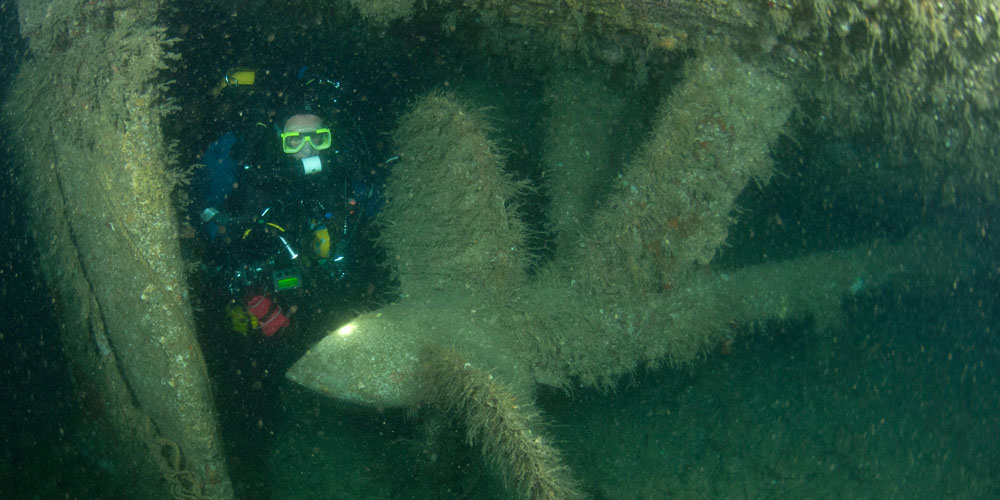
5. SS Luxor
In early 1918, ships were produced and sent straight out to work in the convoys feeding Britain. The SS Luxor was one such a ship. Soon after her maiden voyage, she was heading from Cherbourg to Barry, Wales, in ballast, in a convoy. About 2am on 19 March 1918, the speed of the convoy had reduced to 6.5 knots and St Catherine’s Point was within 30 miles. UB-57 was waiting in this area and spotted the convoy, and the very ‘colourfully painted’ Luxor. A torpedo was launched and hit the ship just aft of the engine room. The Luxor went down so rapidly that no SOS message was sent. The good news is that all 40 of the crew successfully abandoned ship and were rescued by the convoy escort.
The SS Luxor sits on a shale bottom at about 60m, with the stern on its port side and the bow very broken. The stern is an interesting dive own its own, as the four-inch gun is still in place, resting on the seabed but still attached to its mounts. Moving forward, there are a number of winches that make good homes for conger eels and lobsters. The engine is hidden under plates but the boilers are accessible and there is a swim-through between them. The bow is very broken, but further investigation reveals the hawse pipes, and an impressive anchor.
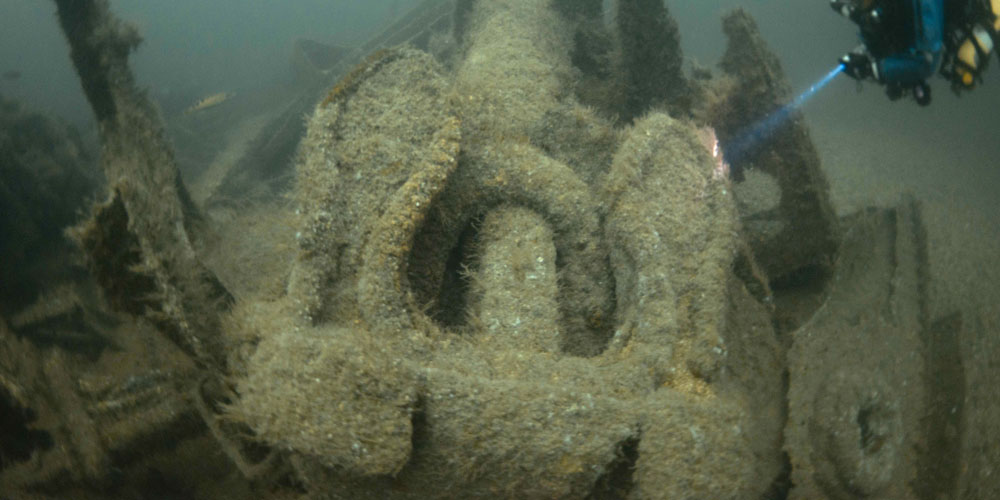
The diving practicalities
In these two articles, I have shared with you details and photographs of a number of little-dived wrecks off the south coast of England. All of these dives were made from the charter boat Wight Spirit under the guidance of the skipper Dave Wendes. Dave is a recognised authority on the wrecks of the south coast, having written South Coast Shipwrecks off East Dorset and Wight (1870-1979) and a newly published companion volume, the supplement to the same.
The dive team are all experienced divers who use a mix of open-circuit scuba set-ups and closed-circuit rebreathers to dive on these wrecks in the 40-60m range. In all cases, each diver carries enough gas to be self-sufficient, although the buddy system is still used. All divers carry and use a delayed surface-marker buoy with at least one spare.
To dive in this range, you need to be trimix qualified and the ideal qualification ‘set’ is Twin Set, Accelerated Decompression Procedures and at least Explorer Mixed Gas on open or closed circuit. On these courses, you will learn how to use a twin set, the use of rich nitrox mixes for decompression and the safe use of trimix. As with any training, once qualified you’ll need to ensure that you do sufficient build-up dives and practise your new skills. Finally, the key is to build a team of like-minded divers, you’ll become friends, and go diving.
This UK Diving article was originally published in SCUBA magazine, Issue 104 July 2020.

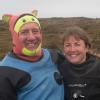 Author: Johno and Cathy de Lara | Posted 28 Nov 2020
Author: Johno and Cathy de Lara | Posted 28 Nov 2020



